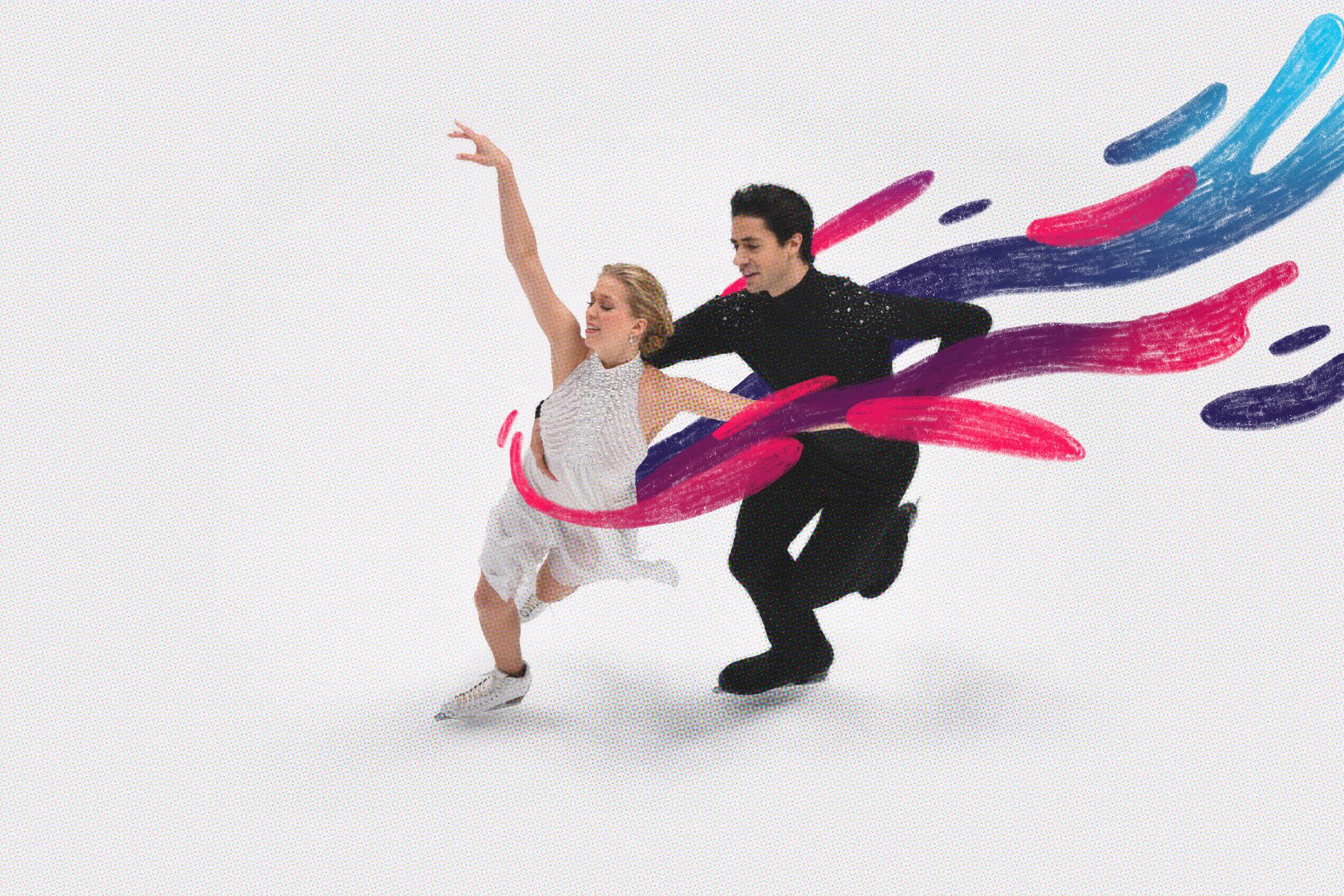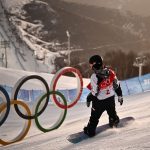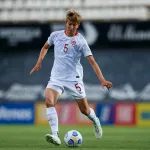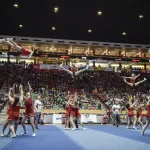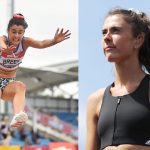In 1924, figure skating became the first sport in the Winter Olympics to allow women to compete. But though the men competed under categories for “men,” women could only compete under “ladies.”
Figure skating is also the last winter sport to change that naming convention: The 2022 Winter Olympics is the first to let women compete as women, not ladies. It’s a subtle change — one that audiences may miss — but a meaningful one. For a century, figure skating has clung to rigid gender rules, about everything from costumes to who can compete as a pair, that have enforced specific expectations about how athletes should look or behave. Some skaters have even reported hiding their gender identity in order to conform.
That culture, while still deeply embedded in figure skating, is starting to change. And not just in name alone.
This year, more out LGBTQ+ skaters, including the first out nonbinary Winter Olympian, will compete in the Games than ever before. This year there will be nine openly LGBTQ+ figure skaters in Beijing. There were three in 2018 and none in 2014. Overall, at least 35 out LGBTQ+ athletes will compete this year, double the number that competed in the last Winter Olympics.
All of it is happening as the popularity of figure skating, particularly in the United States, continues to wane. More athletes and fans are calling for a significant cultural shift in figure skating that sheds its gendered, classist and racist roots and embraces a more diverse vision of what the sport can be. In the last couple of years, those calls have grown louder and more powerful, leading to small changes in terminology and costume rules and larger changes that have created a more accepting culture for LGBTQ+ skaters.
Historically, figure skating was dominated by men and reserved for elites. Figure skating clubs excluded women and people of color.
Some of that legacy remains. The sport is dominated by White, well-off athletes who are molded, coached and judged by former athletes or judges who adhere to traditional aspects of the sport. It’s still extremely expensive for kids to participate in figure skating, and much of the technical structure has rewarded heteronormative couplings and performances. That’s particularly true in pairs skating and ice dance — the two disciplines of figure skating that are done in pairs. Pairs skating involves jumps and throws, while ice dance is a form of ballroom dancing on ice. In both disciplines, the rules are written to specify moves the man should do and moves the woman should do. It was only recently that women figure skaters started to wear pants more in competition — for ice dancers the rule was just changed for the 2021-2022 season.
The terminology of “ladies” is a relic of the origins of figure skating, but over the past five to 10 years steam has built for change, said Jackie Wong, the expert behind Rocker Skating, a figure skating analysis site. Other countries, including Canada, had already adopted the change for some time, but the International Skating Union (ISU), the sport’s international governing body, and the United States were holdouts.
Ice dancer Kaitlyn Weaver, a two-time Olympian and three-time World medalist, said the terminology further emphasized the gendered nature of the sport. Women were celebrated for being graceful, polite, demure — all the qualities of a “lady” — instead of being athletic.
In Canada, the country she’s represented, women figure skaters have been called women figure skaters for as long as she’d been competing — at least a decade. Leanna Caron, the former president of Skate Canada, was one of the people who pushed the International Skating Union to make the change to women, Weaver said, along with other skaters and fans who felt the terminology was outdated and sexist. Men weren’t being called “gentlemen,” after all.
But there was pushback from some who felt uncomfortable calling the teenagers who dominate figure skating “women,” Wong said. Many of the leading athletes in the women’s discipline are under 18, but that’s not necessarily a new phenomenon. When Peggy Fleming first went to the Olympics to represent Team USA in 1964, she was 15.
“As people have tried to post-rationalize why they use the word ‘ladies’ as opposed to women, that’s what they’ve come to,” he said.
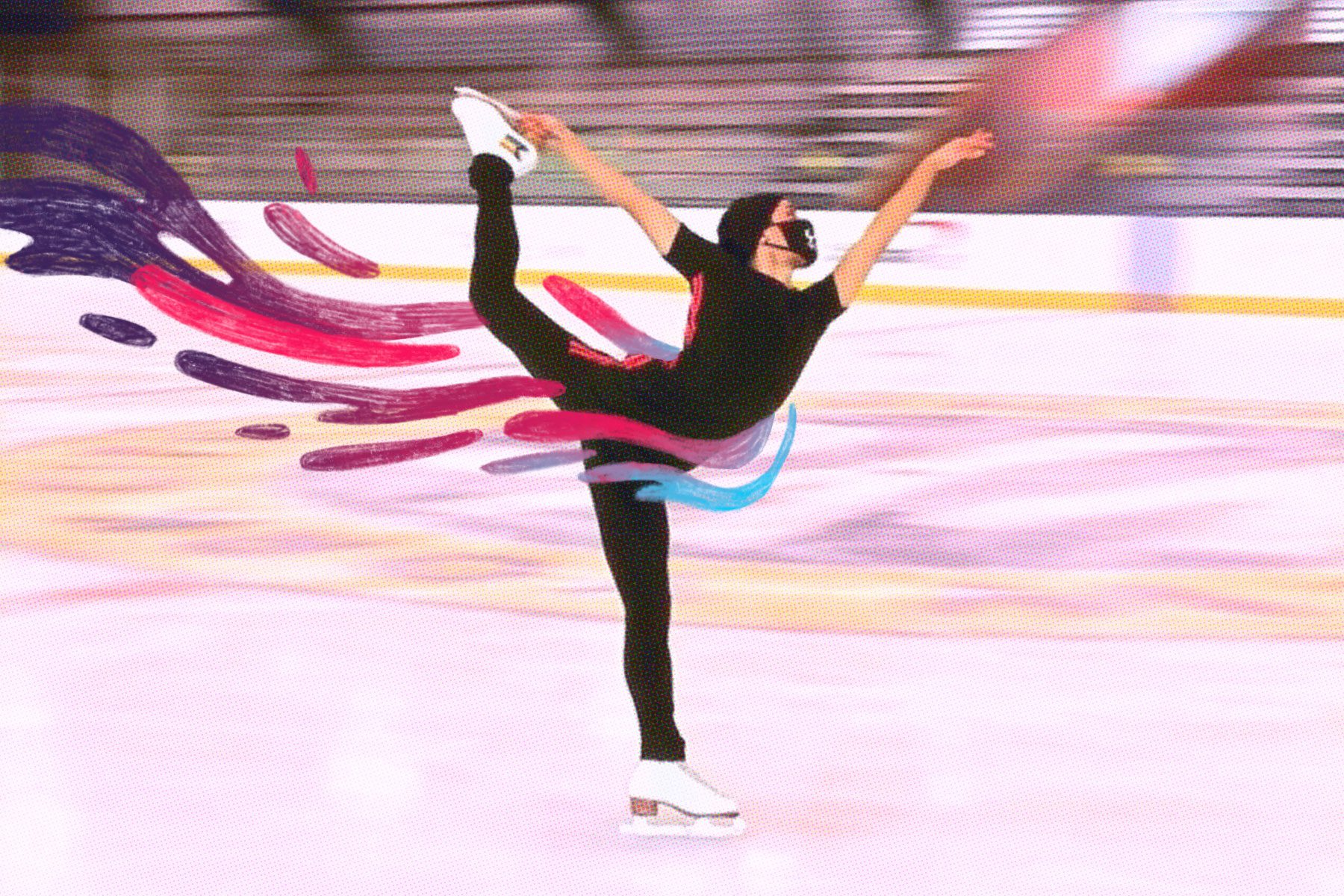
The change finally came last year, when the International Olympic Committee’s Gender Equality Review Project proposed a rule change to the International Skating Union, calling for a balanced portrayal of men and women, the ISU said in a statement. The rule ultimately passed in the summer of 2021, making figure skating the last sport to do so at the international level.
The impact of that can’t be understated, Weaver said.
“The term ‘ladies’ takes away our power, our athleticism, our sexuality,” Weaver said. “Even in the English language there are instances where ‘ladies’ feels right versus where ‘woman’ feels right — ‘the ladies who lunch’ versus ‘the first woman to land a triple axel.’ When we talk about any type of athletic feat or strength or power, we use the word ‘women.’”
U.S. Figure Skating, however, has still not made the change.
Barbara Reichart, a spokesperson for the national governing body, said U.S. Figure Skating is in the process of “reviewing the impact” of the ISU’s change and how it would be implemented domestically, but, when asked, did not specify whether the change had already been decided on.
Resistance to change has fallen perhaps heaviest on LGBTQ+ skaters who are navigating their love for a sport that is still operating with specific gender categories and with few allowances for skaters who don’t identify as heterosexual and cisgender.
Weaver came out as queer last year after she had retired from skating, because she felt it was the only time she could. Coming out while she was a skater could have subjected her to harsher judgment in a sport that is highly subjective, she said.
“You just never know who’s going to be sitting on your panel that might know something about you that they don’t agree with that might influence how they view you,” she said. “I didn’t understand how my queerness would affect that. I was so fixated on my presentation that there was no space to even understand who was under there.”
Ice dancers, especially, are beholden to what is nearly always love story choreography, all centered around romantic heteronormative portrayals. Few skaters have been able to successfully break out of that expectation — American brother and sister pair Maia and Alex Shibutani were rare exceptions — and there is little room for any artistic expression that is more gender fluid.
That’s something that Weaver wrestled with throughout her career: The fear of being judged, in a sport where image is everything, loomed large. As a partner skater, she also carried that burden for those around her, stifling who she was.
“That’s my partner’s career. I’m an ice dancer — that’s both of our lives and our families and our communities that have put everything behind us,” she said.
Eliot Halverson, a former U.S. Junior National Champion and a figure skating coach who is nonbinary trans, said that coming up in the sport meant facing a lot of coded language from coaches and others who told her to put on more weight or be more powerful — things she was being encouraged to do to appear less feminine in competition.
But as a competitor, Halverson said she felt she had to do what she could to be successful in the sport — even if it meant “derailing” her on her path to finding her gender identity.
“You are so laser focused on what you think you should be and what the hoop looks like that you’re being asked to jump through, and for this sport it’s pretty clear what that hoop looks like,” Halverson said. “I was very cognizant of the fact that I was not the shape of that hoop — I was not really the mold of what would fit through.”
Now, she trains other trans and nonbinary skaters, including Jonathan Van Ness of “Queer Eye” fame. She is also part of the Diversify Ice Foundation, which works to uplift Black and Brown skaters, and serves on U.S. Figure Skating’s Diversity, Equity and Inclusion Task Force, which includes pairs skater Timothy LeDuc (who this year became the first out nonbinary Winter Olympian) and Jaclyn Ward Helms, the first Black national judge for U.S. Figure Skating.
Halverson’s work now has been focused on changing the pipeline for skating, so that gender diverse skaters have the opportunity to come up in the sport without sacrificing who they are.
Pipeline issues continue to be a persistent problem for skating at all levels. Anna Kellar, a nonbinary trans athlete who has returned to skating to compete in amateur adult-level competition, is facing that now as they and their partner, Erica Rand, attempt to qualify for the national competition.
In order to compete in U.S. adult nationals, you must first test technical skills before a panel of judges to qualify, and the rules for testing and competition are different. The test specifies that a pairs couple must be a man and a woman. The rules to compete allow any pair, such as a nonbinary skater and a woman, but they’d have to compete against other like couples, Kellar said.
Kellar and Rand, who have been training to nail their lift so they can compete, don’t know if they’ll even be allowed to make it that far if they can’t compete against everyone in the competition.
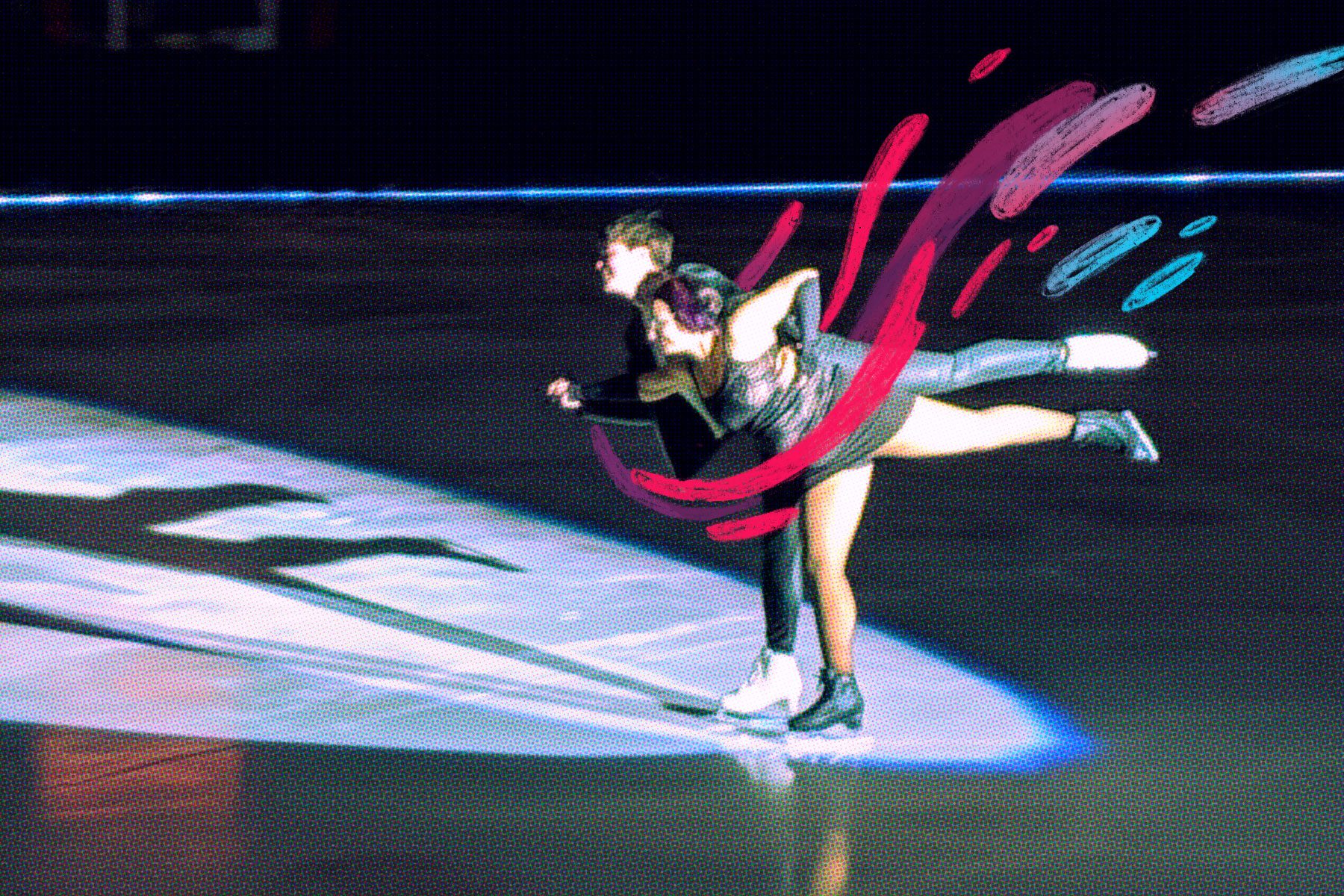
“There are these rules that don’t quite match up between the rules for testing and then the rules for competing,” said Kellar, who is also the executive director of the League of Women Voters of Maine. “There’s no recognition for nonbinary people.”
Kids who are trying to come up in the sport are still facing those binary rules about gender, where pairs and ice dancing is portrayed to young skaters as a sport for a man and a woman. It’s an “insular world,” Kellar said.
“It can be hard to break out of these patterns and how we see things,” they said.
That’s why in some ways, LeDuc’s prominence in the Olympics has been heralded by LGBTQ+ athletes as a major sea change in figure skating.
“It gives me shivers every time,” Halverson said. “If I was able to, as a little 10-year-old in the sport, watch Timothy win a national title and have that joy and that moment of qualifying for the Olympics as a publicly open, nonbinary person, that would have changed my whole perception of what I was capable of and what the sport was like.”
People like LeDuc, Weaver, and Halverson have helped push the sport significantly in terms of LGBTQ+ representation over the past few years. Jason Brown, who will be competing for Team USA in Beijing, Amber Glenn, a reserve for this year’s team who was the first openly LGBTQ+ woman figure skater on Team USA, Olympian Adam Rippon, and others have also brought a new wave of prominence and acceptance.
But while representation will make a significant difference, it places the burden on those who come out and have to face homophobic and transphobic comments from a skating community — particularly some foreign skating communities, like in Russia, where coaches have made disparaging comments against LGBTQ+ skaters — that does not fully accept them.
“The honest truth for me is that I’m scared for [LeDuc]. I think it’s really the job of the figure skating community that is forward-thinking, kind and that has love in their hearts to fight the battle for them so they can just skate,” Weaver said.
That change has been pounding on the door of figure skating for years. The sport is increasingly losing touch with the world around it. In the height of figure skating’s popularity in the mid-1990s, nearly 50 million people tuned in to watch the women’s figure skating short program in 1994. At best, figure skating helped draw about 20 million viewers to the men’s short program four years ago, which was the only skating discipline in which the U.S. had a chance at a gold medal.
Athletes like Elladj Baldé, the former competitive Canadian figure skater who has captivated TikTok with videos of his skating performing backflips and hiphop moves, have drawn a new generation to the sport — specifically because he is authentically himself: a Black man performing to modern music. Competitively, figure skating hasn’t moved to a place where routines like Baldé’s could be performed in competition. And the sport still suffers from significant underrepresentation of people of color and other diverse groups.
“The sport is dying in North America. If the sport does not change and find a way to appeal more to youth culture, then kids are just going to say, ‘No.’” said Philip Hersh, the former Olympic sports writer at the Chicago Tribune who has covered the previous 11 Winter Olympics. “They are not blind to the fact that sport is losing its popularity, but they’re also not yet willing to make the big changes necessary — to take the chances necessary.”
For skaters, that change looks like a dismantling of pillars of figure skating: In so many ways, it’s still traditional, elite and White — just as it was 100 years ago. So while a terminology change and greater acceptance of LGBTQ+ skaters is a step forward, for many, they are steps that are coming very late.
“There are structural hurdles and then there are cultural hurdles but I think we benefit from having the conversation about gender in the same space as we are talking about: ‘What do want out of the sport — at an elite level and at a recreational level?’” Kellar said. The sport, they said, “seems in many ways a relic that doesn’t have space for a modern cultural conversation.”
